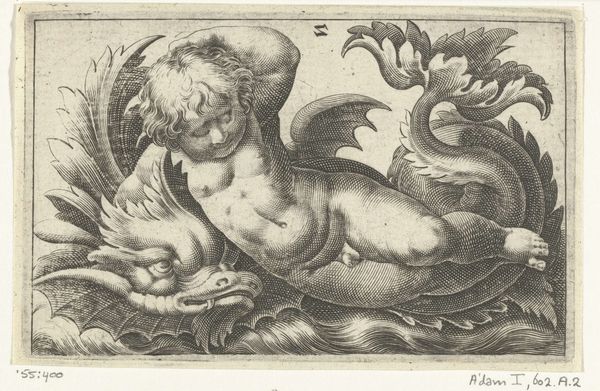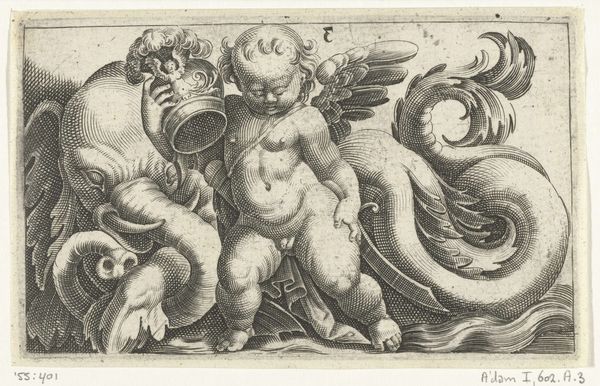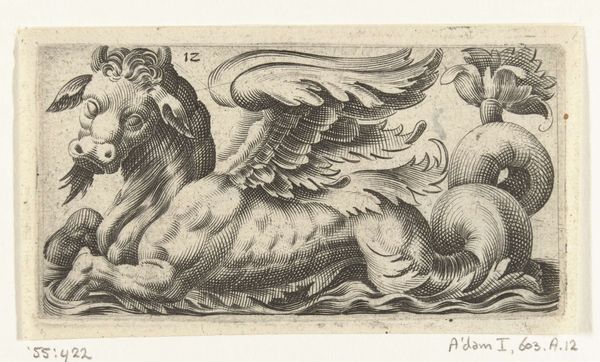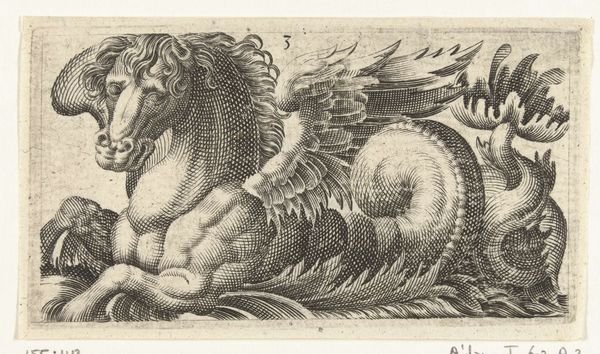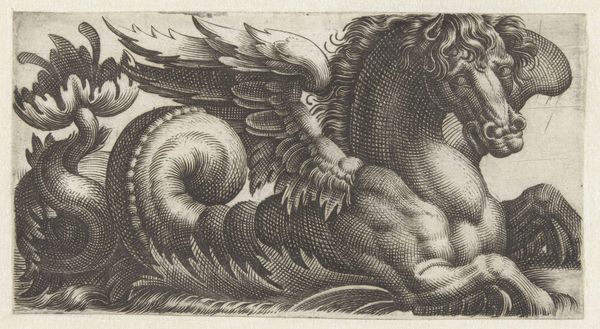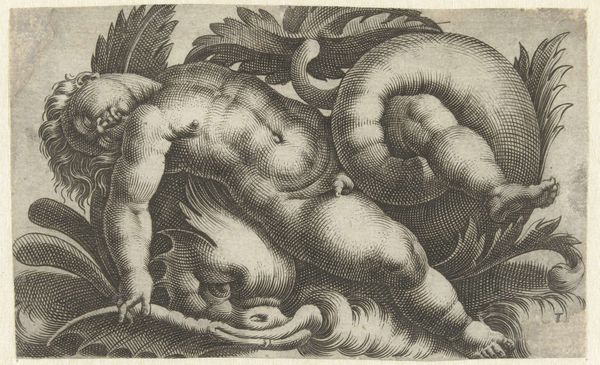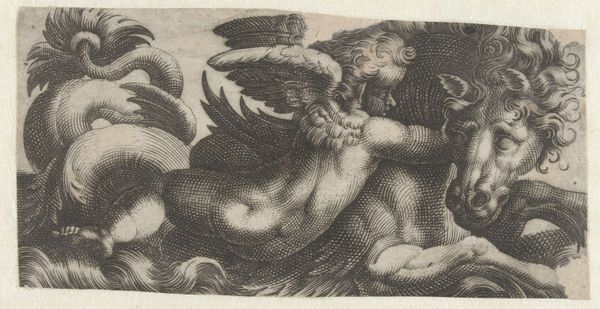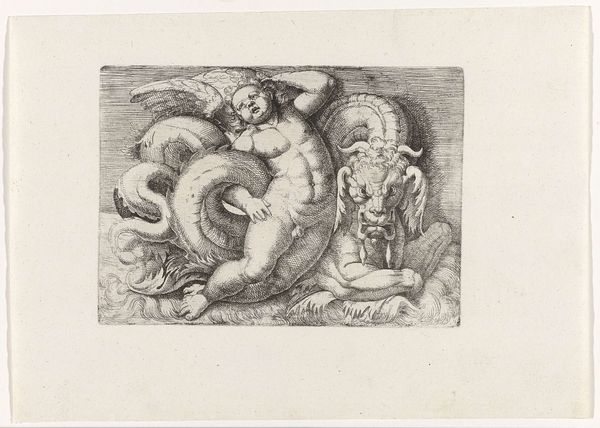
print, engraving
# print
#
old engraving style
#
mannerism
#
figuration
#
11_renaissance
#
pencil drawing
#
mythology
#
line
#
engraving
Dimensions: height 76 mm, width 123 mm
Copyright: Rijks Museum: Open Domain
Curator: Here we have a rather peculiar engraving from somewhere between 1526 and 1606. The Rijksmuseum attributes it to Adam Fuchs, and it’s called "Kind met een tweetand op een zeehond"—or, "Child with a Trident on a Seal.” Editor: Oh, my! My first thought is how unsettling this cherubic child looks, perched on that beast. All plump, sort of buff, holding a trident… It’s less cute, more confrontational. The creature, the so-called “seal,” looks nothing like a seal! A mythical sea dragon maybe, a bizarre chimera. The line work is fascinating, intricate hatching giving such form to the figures, all while the little one wields this…fork. What do you make of it? Curator: Well, the Mannerist style, with its exaggerated forms and artificiality, certainly lends to that feeling of unease. It rejects Renaissance ideals of harmony. Looking closer, the "seal" isn't exactly anatomically sound. It looks like a composite, echoing a general interest at the time with the grotesque, the hybridized. The print serves a symbolic function too, beyond simple aesthetics. Consider how powerful imagery influenced viewers back then— these prints had didactic purposes, teaching moral or mythological tales to wider audiences. Editor: Yes, I can see that. It's not merely decorative, it’s telling a story, or trying to, and rather intensely! It makes me think about the anxieties surrounding childhood— the vulnerability of youth being almost weaponized here, in that disproportionate musculature, the almost grim set to the child’s face... that the world imprints on them from such an early age! A baby Hercules wielding a trident? How funny and utterly disturbing at once. It’s definitely not your typical “adorable cherub” scene, is it? Curator: Certainly not! And thinking about the history of printmaking during this period, and how these images were circulated widely, it suggests a society deeply invested in imbuing even the most fantastical figures with socio-political meaning. A baby Hercules certainly hits on themes of power, mythology, and potential, all at once. Editor: So, even in something so seemingly strange and mythical, there is a societal mirror reflecting ambitions, anxieties, perhaps even the world’s hopes placed upon new generations. Fascinating how an image so small can whisper so many untold stories. Curator: Precisely, and the beauty of accessing art’s role and purpose in society gives even fantastical imagery a tether to something humanly profound.
Comments
No comments
Be the first to comment and join the conversation on the ultimate creative platform.

